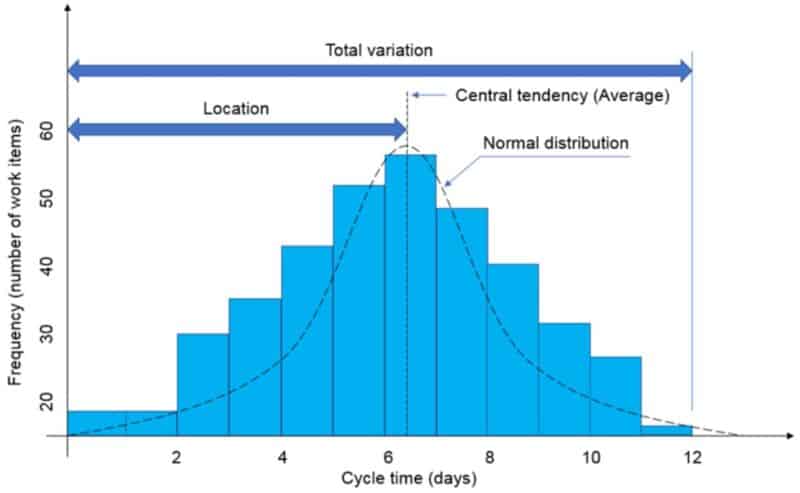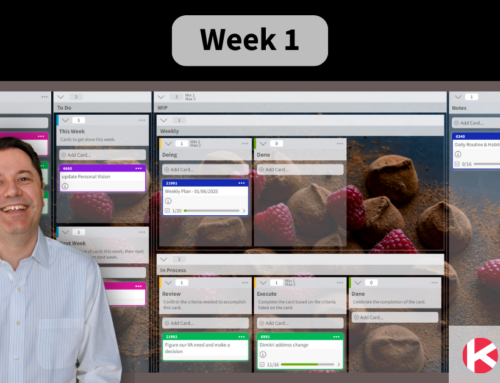
Over the course of the years, defining work expectations has always been an important part of day to day activities of project managers and project teams. Whether working in your own project or as part of a team, once starting a piece of work, you probably were asked by project’s stakeholders or even by customers (either internal or external) about the classic question: when will the piece of work be done?
In order to answer that question, you need to sincerely ask yourself and make forecasts about the future which everybody knows is certainly full of uncertainty. In many different fields (e.g. project management, manufacturing, etc.) it is often very difficult to answer the above question with 100% certainty due to usually many different factors impacting our response.
Usually, commitments based on estimations are set when customers and project stakeholders ask about when they will receive a given service or product. This frequently leads to difficulties in delivering on time as well as to customers dissatisfaction.
This means we have to consider a probabilistic approach aiming at setting realistic work expectations rather than vague commitments.
In the Kanban method, the issue of setting realistic work expectations is treated through what is known as Service Level Expectation.
What is Service Level Expectation (SLE)?
Service Level Expectation (SLE) can be considered as a probabilistic-based approach that helps forecasting realistic work expectations through the Kanban method. SLE reflects the expectation regarding the duration required for a work item flow through the process with a specific statistical tolerance. In other words, SLE helps predict the time duration for a work item to move in the workflow from the start to finish of the process.
Therefore, the overall fixed time that work items are expected to spend in a certain process is represented by the SLE. The probabilistic nature of SLE is the reason why it uses the term “expectation” and not “agreement”.
Basically, SLE is composed of two essential parts: 1) the time duration of the work items (in hours, days, weeks or month, etc.) and 2) a probability related to that time duration. A classic SLE example can be stated as follows: “We can assure the customer that 75% of work items will be finished in 10 days”.
How to Set Realistic SLEs with Kanban?
Realistic SLEs can be achieved by making use of appropriate Kanban metrics based on work items data. Among many available metrics in the Kanban method, the metric cycle time can be used successfully for this goal.
In previous articles, we have already shown what the cycle time metric is about, its importance, how to calculate it as well as how this metric can be inferred through a digital Kanban board. If you are willing to recap those concepts, take a look at the article: Kanban Calculations: How to Calculate Cycle Time.
In order to set realistic SLEs through the cycle time metric, it is important that firstly historical data related to this metric are available. Next, by using a cycle time histogram chart, it is possible to visualize the cycle time distribution of all work items in the process over a specific time duration

The horizontal axis of the above figure shows the cycle time (measured in days) and divided into many time intervals, which are represented by the bases of the bars. The vertical axis shows the frequency of observations (i.e. number of work items) falling within each cycle time interval and is represented by the height of the bars.
Besides the chance of visualizing the overall cycle time distribution of work items, it is also possible to note the cycle time location (central tendency) of all work items through the average cycle time duration. Additionally, the cycle time variation regarding the total work items can be observed as well, which represents the process total variation.
By taking into consideration that the overall cycle time duration of the work items follows a statistical normal distribution (dashed line in the figure above), it is possible to assess the probability of finished work items for a particular time duration. This evaluated probability can then be used for defining realistic SLEs.
In order to allow reliable information, it is important to have as much data available as possible. Therefore, the more work items data are available, the better the probability confidence level of SLE is.
Now that you have a better idea about how to set realistic work expectations with Kanban, let’s take a look at the main benefits of using SLEs.
Benefits of Using Service Level Expectations
Using SLEs allows carrying out analyses of the actual status of your process workflow, thus helping to define suitable work expectations aiming at delivering a product or service on time. Additionally, monitoring SLEs can contribute to continuous improvements in your process through both a better overview of the process and possible improvement gaps.
SLEs help setting realistic work expectations with the Kanban method through predictions based on a data-driven approach rather than commitments relying on estimations. This contributes to accurate work expectations by considering the inherent variability of your process.
Learn to Work Smarter, Not Harder!
Get our top articles weekly.
Table Of Contents
Discover many more posts…







